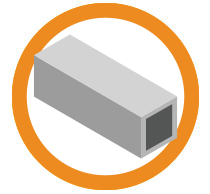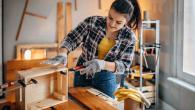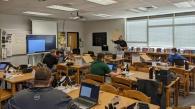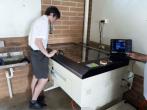Despite advances in gender equality, the gender gap in STEM careers continues to persist. According to the University of Adelaide, women make up only 16% of the STEM workforce, whereas the broader Australian workforce has close to 50% female participation.
One major factor contributing to this gap is the perception that boys are better in math and science subjects than girls. Additionally, boys' early inculcation of confidence in STEM subjects compared to girls exacerbate the problem. Educators and parents must work together to help girls overcome these obstacles and excel in STEM fields.

The Perception Gap
In the 2020-21 STEM Influencers survey, parents of boys were more likely than parents of girls to believe that STEM skills are important. This creates a perception gap, which can lead to a lack of confidence in girls’ abilities and reduced aspirations for STEM careers. This gap is perpetuated by media representations, limited female role models in STEM fields, and unconscious biases among educators and parents.
In the 2020-21 STEM Influencers survey, parents of boys were more likely than parents of girls to believe that maths, technology, and engineering skills are important.
The data from the 2020-21 STEM influencers survey also showed a correlation between educators’ perceptions of gender association in different jobs, and the perceived importance of STEM skills to those jobs.
- Computing or information technology jobs were better suited to men and were the jobs where STEM skills were the most essential.
- Pharmacy and teaching were the only jobs better suited to women, and where STEM skills were essential.
- Nursing was markedly associated with women, with STEM skills moderately essential.
One way to address this perception gap is to provide girls with positive STEM experiences and female role models. Educators can promote female representation in STEM fields through guest speakers, field trips, and mentorship programs. Parents can also expose their daughters to STEM-related activities at home, such as science experiments, coding games, and math puzzles. Additionally, encouraging girls to take advanced math and science classes can help build their confidence in these subjects.
The Confidence Gap
In addition to the perception and opportunity gaps, the confidence gap is another obstacle that girls face in pursuing STEM careers. Boys are often more confident in STEM subjects due to early inculcation that they can excel in areas like science, math, engineering, and technology. Girls, on the other hand, may feel like they need to prove themselves or face additional scrutiny in STEM classes and activities.
In the same survey, educators reported boys to be more confident than girls in STEM subjects, skewing most prominently in engineering with 61% of educators believing boys more confident than girls. Conversely, girls are more confident in social science, arts and English subjects.
Interestingly, women only make up 36% of enrolments in university STEM courses, and just 16% of enrolments in vocational STEM courses.
One way to address the confidence gap is to provide girls with opportunities to build their skills and showcase their abilities. This can include participating in science fairs, robotics clubs, and coding competitions. Encouraging girls to take on leadership roles in STEM projects can also help build their confidence and develop their leadership skills. Additionally, providing girls with constructive feedback and positive reinforcement can help them overcome self-doubt and build a strong sense of self-efficacy.
Conclusion:
In a Deloitte survey, 82% of Australian businesses agreed that people with STEM qualifications are valuable and high in demand in the workplace. This creates opportunity for girls to step into roles that require STEM qualifications.
To close the STEM gender gap, educators and parents should be more receptive to equip girls with the skills and boost their confidence to succeed in math, science, technology and engineering in early education and through K-12.

Resources:
Learn: Tools For Schools offers the KodeKLIX STEM kits for an intuitive, block based coding editor for beginners (available here). For intermediate and advanced learners, the Dobot robotic arms provide a more in-depth practice of programming and design thinking (available here).
Discover: The Australian Resource Directory for Women Entrepreneurs contains a collection of relevant programs, funding sources, networks, mentors and tools to support women entrepreneurs.
Watch: Hidden Figures - A movie based on a true story of three female African-American mathematicians working for NASA on the Mercury program in the early 1960s.
Join: The Scope is a Facebook community for educators, students, parents and other STEM enthusiasts to share inspiration and ideas.







